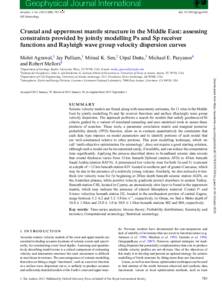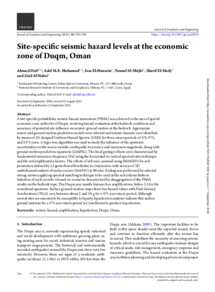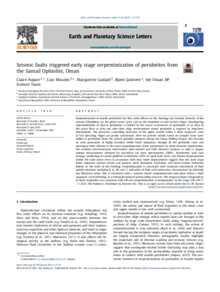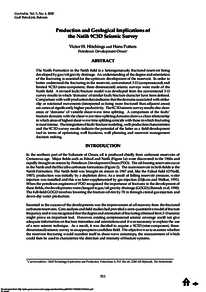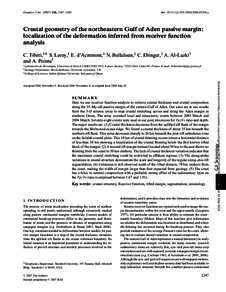Document
Crustal and uppermost mantle structure in the Middle East : assessing constraints provided by jointly modelling Ps and Sp receiver functions and rayleigh wave group velocity dispersion curves.
Identifier
DOI: 10.1093/gji/ggv050
Contributors
Pulliam, Jay., Author
Sen, Mrinal K., Author
Dutta, Utpal., Author
Pasyanos, Michael E., Author
Mellors, Robert., Author
Publisher
Oxford University Press.
Gregorian
2015-05
Language
English
Subject
English abstract
Seismic velocity models are found, along with uncertainty estimates, for 11 sites in the Middle East by jointly modelling Ps and Sp receiver functions and surface (Rayleigh) wave group velocity dispersion. The approach performs a search for models that satisfy goodness-of-fit criteria guided by a variant of simulated annealing and uses statistical tools to assess these products of searches. These tools, a parameter correlation matrix and marginal posterior probability density (PPD) function, allow us to evaluate quantitatively the constraints that each data type imposes on model parameters and to identify portions of each model that are well-constrained relative to other portions. This joint modelling technique, which we call 'multi-objective optimization for seismology', does not require a good starting solution, although such a model can be incorporated easily, if available, and can reduce the computation time significantly. Applying the process described above to broadband seismic data reveals that crustal thickness varies from 15 km beneath Djibouti (station ATD) to 45 km beneath Saudi Arabia (station RAYN). A pronounced low velocity zone for both Vp and Vs is present at a depth of ∼12 km beneath station KIV located in northern part of greater Caucasus, which may be due to the presence of a relatively young volcano. Similarly, we also noticed a 6-km-thick low velocity zone for Vp beginning at 20 km depth beneath seismic station AGIN, on the Anatolian plateau, while positive velocity gradients prevail elsewhere in eastern Turkey. Beneath station CSS, located in Cyprus, an anomalously slow layer is found in the uppermost mantle, which may indicate the presence of altered lithospheric material. Crustal P- and S-wave velocities beneath station D2, located in the northeastern portion of central Zagros, range between 5.2–6.2 and 3.2–3.8 km s−1, respectively. In Oman, we find a Moho depth of 34.0 ± 1.0 km and 25.0 ± 1.0 to 30.0 ± 1.0 km beneath stations S02 and S04, respectively.
Member of
ISSN
0956-540X
Resource URL
Category
Journal articles

